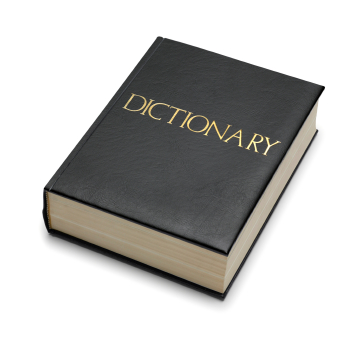It is a common occurrence in mathematics that when something does go wrong, it goes terribly wrong. This exact phenomenon occurs with the Banach-Tarski Paradox. Informally, it says that one can take a sphere (in 3 or more dimensional space) can be split into finitely many pieces and, using only rigid motions, can be rearranged to form two spheres. 
Alternatively, it says that we can take a pea, break it up, and rearrange it to be the size of the sun. By now, one might ask themselves how something such as mathematics could support or even prove this outrageous claim! The answer lies with the Axiom of Choice, which we now state.
AXIOM: For every collection of sets there is a function
so that
for every
.
The axiom simply says that we can assign to every set, an element of itself. This doesn’t seem that far-fetched, which is why it is generally accepted by mathematicians. In fact it has equivalent forms, such as Zorn’s Lemma, Well-Ordering Principle, and the Hausdorff Maximal Principle, which have been used to prove some of the most important theorems in mathematics. Such examples include:
- Every vector space has a (Hamel) basis.
- Every commutative ring with unit contains a maximal ideal
- The Cartesian product of of compact topological spaces forms a topological space with the product topology.
- Banach’s extension theorem which is used to prove the Hahn-Banach Theorem.
These are but a few of the consequences of the Axiom of Choice. One such consequence is the subject of this text. We will now formally state the Banach-Tarski Theorem.
THEOREM: Let and
be bounded subsets of
, for
. Suppose further that the interiors of
and
are not empty. Then there exists some
and partitions of
and
that can be written as
and
where
is congruent to
. In this case we write
.
Put simply, if we have two bounded sets with nonempty interior in Euclidean space of three dimensions or greater, then we can break them up into sets so that their pieces are congruent. Now, there are some words that we should define just so we are all on the same page. We will go through those now. For the purposes of this post, .

A set is bounded if it is in some sense of finite size. More formally,
DEFINITION: A set in Euclidean space is bounded if
, where
is the Euclidean norm.
A partition of a set is a set of pieces which can be put together to make the set. Or,
DEFINITION: Given a set , a partition of
is a finite collection of subsets
so that
; and
if
.
The interior of a set is the set of all points that do not lie on the boundary (or edge). Formally,
DEFINITION: A point is interior to a set
if there is some
for which
. The interior of
is the collection of all such points.
Finally, two sets are congruent in Euclidean space if there is some way to fit one over the other without stretching, i.e. if they “look the same”. We define this formally as,
DEFINITION: Two sets are said to be congruent if there is an isometry (distance preserving, injective map) between them.
We will now prove the Banach-Tarski Theorem for a solid ball in in 4 steps.
STEP 1: Let be the (free) group of all strings containing 4 different symbols
so that
does not appear next to
and no
appears next to a
. In vSauce’s video, he calls these 4 elements
. Now we will define a set
to be the set of all allowable strings that begin with
. We will define the sets
and
similarly. If
denotes the identity then we can write
as
. This is because every string that is not the identity, must start with one of the four elements. Note that also the set
is the set of all strings that do not start with
. Hence we can write
as
. We can do this with the b’s as well.
. So, what we’ve done here is taken the group
, split it up into 4 pieces, then shift these pieces to create two identical copies of the original group. Now we have to find a structure in
that is isomorphic to the
.
STEP 2: We will consider our motions as rotations about an axis. To be more precise let be a rotation of
about the
-axis, and let
be a rotation of
about the
-axis. There are other choices for
but we shall content ourselves with this one. Now we let
be the group generated by these rotations
and
. Note that this is almost the same as
except we need to know that there are no nontrivial combinations of
and
that returns us to where we started. Let
. Then it can be shown (see [2]), by using elementary linear algebra, that
maps
to
where
and
. This means that
. Hence what we have is that
is isomorphic to
.
It is at step 2 that we see why we must be in dimension 3 or higher as we cannot form this group in 2 dimensions. We will now start to see how the sphere fits in to this picture. This may get a little tough after this point.

STEP 3: Let be the unit sphere with a partition generated by
. Each set in the partition is called an orbit. We now apply the axiom of choice to choose exactly one point from each orbit. We collect all of these points in a set
. Now we define four sets arising from
.
;
;
and;
.
Now we have that where
is the set of points that are fixed by rotations of
. Similarly
. Notice that any rotation has exactly two fixed points, and since
is countable, there are only countably many points fixed by an element of
, i.e.
is countable. Now let
be a line through the center of the ball that misses
. Let
be an angle so that
, for all
. Let
. Then we see
.
This tells us then that and
.
We have made it out of the thick part of the woods now. We will now extend this result to the entire sphere.

STEP 4: We now extend this result to the solid sphere, minus its center simply by extending each point to a segment emanating from the center but not including the center (this is called radial extension). To finish, we consider the line
obtained by shifting the
-axis up by half the radius of the sphere. We next consider a rotation
about
with angle
. It can be seen that
whenever
. Thus we collect all of these into a set
. We conclude by the same reasoning as before that
.
This is no trivial theorem by any means. Its consequence is indeed known as a paradox. However, note that we also relied on the sphere containing uncountably many points. It is not at all clear that there are uncountably many points in real life. But if we do, then it should be possible to duplicate objects. And if we don’t it would seem that Zeno’s Paradox should hold. It is interesting to think about the consequences of seemingly simple things. I encourage the interested reader to explore the references listed below.
[1] Wikipedia
[3] S. Wagon, The Banach-Tarski Paradox, Cambridge University Press, Cambridge (1985).
A month ago I came across this beautiful theorem about this paradox: https://youtu.be/s86-Z-CbaHA
LikeLike
sorry for typo, I meant “…beautiful video about this paradox”
LikeLike
Yes! I actually linked it in the post. It’s probably the best explanation out there right now.
LikeLike